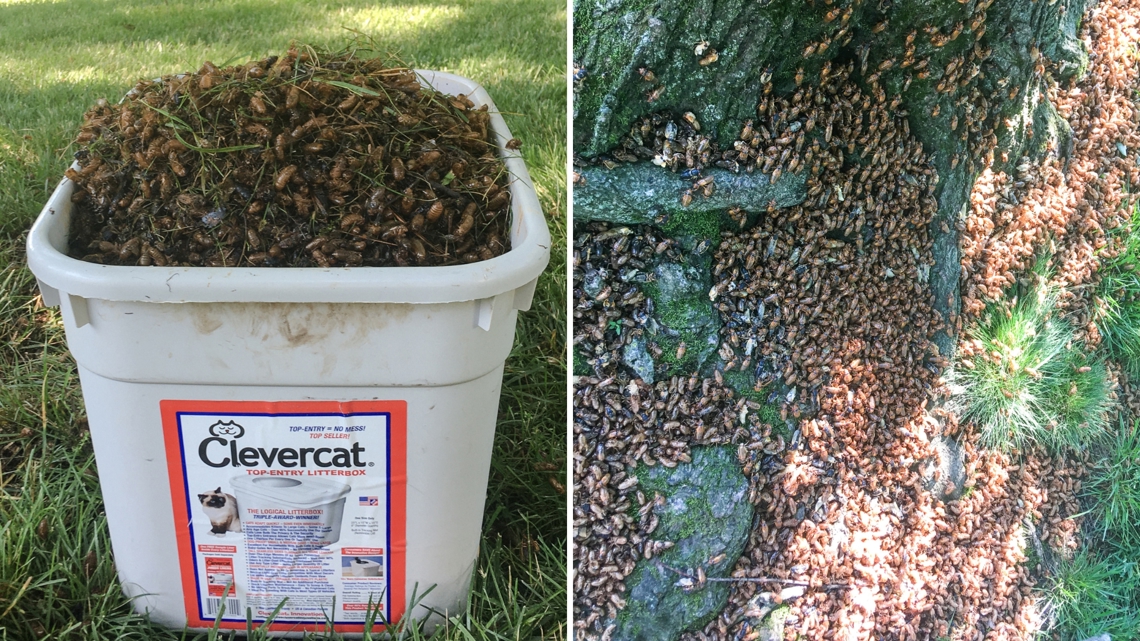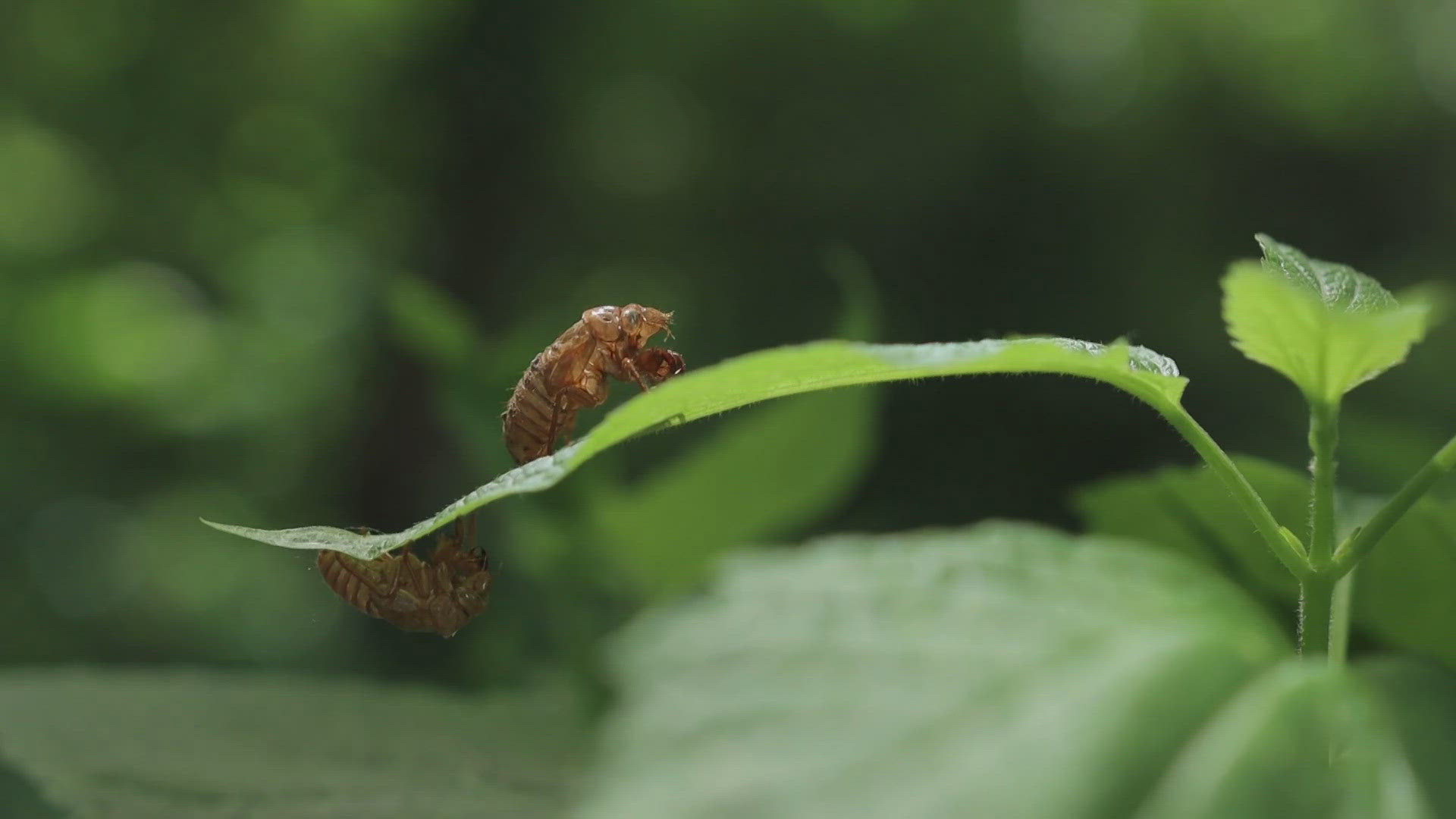MISSOURI, USA — Dead cicadas and cicada shells are starting to pile up around Missouri as this year's periodical emergence continues.
The insects will climb out of the ground near the roots of trees, make a whole lot of noise to attract a mate, lay eggs and then die, not to emerge again for another 13 years. The environmental phenomenon has excited researchers across the state and nation, but has left some residents cursing the bugs, particularly their corpses.
5 On Your Side has received numerous pictures of the bodies and shells from multiple viewers around the St. Louis region. Creve Coeur resident Lisa Schroeder filled a 20-gallon bucket with the natural refuse at the base of one of her property's trees to the point of overflowing.


Don't trash cicada bodies and shells, experts warn
Missouri entomologists, however, urge people against throwing away the shells and bodies. The clean-up act could deprive trees, soil and gardens of valuable nutrients.
"Free fertilizer!" said Kayla Garcia, the Saint Louis Zoo Insectarium's Zoological Manager. "Cicadas add nutrients such as potassium and nitrogen to the soil as they break down. Their emergence holes also aerate the soil and allow water to filter down."
Previous research backs up Garcia's statements. A 2019 study published in the National Library of Medicine academic journal studied tree growth for a three-year period after a cicada emergence.
The researchers found that fertilization from cicada decomposition "strongly increased tree growth" during emergence. Tree size differences also persisted at least two years after emergence, and no evidence of tree growth reductions was found concerning cicadas feeding on them.
How to use cicada bodies and shells as fertilizer
So, what can residents do with the dead cicada bodies and shells instead of throwing them away?
"I would recommend leaving them where they are in your yard or adding them to your garden beds to add free organic matter to that area," said Hanna Kolak, Horticulturist with the Missouri Botanical Garden.
"Cicadas can be composted in a compost bin along with leaves and other vegetative material," Garcia said. "You can crush up the empty molt skins and sprinkle them in your garden beds like mulch."
What about the bad cicadas smell?
Multiple viewers have also messaged 5 On Your Side about the unpleasant smell that emanates from such a mass decomposition. Garcia and Kolak had a simple solution: bury them.
"While large numbers of cicadas can be challenging to deal with, burying them will reduce smell and allow their bodies to break down and enrich the soil," Garcia said.
"The best way to keep the benefits of decomposing cicadas but avoid the smell is to bury the exoskeletons and the deceased insects under the soil," Kolak said. "Other than this, there is no one-hundred percent way to get rid of the smell."
So, rather than throwing the bodies and shells away, show your yard, trees and garden some love by letting nature run its course.
Top St. Louis headlines
Get the latest news and details throughout the St. Louis area from 5 On Your Side broadcasts here.

